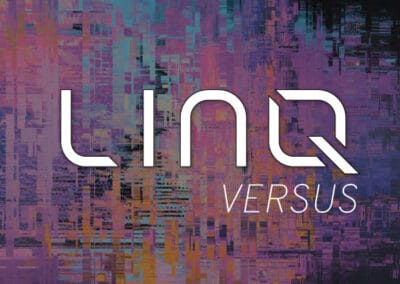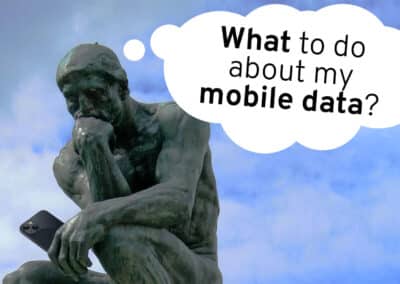
Business leaders often recognize the value of mobile device management (MDM) software, which simplifies device management while increasing security and data protection. But when they’re pitching an MDM solution to a chief financial officer, leaders aren’t always sure how to translate those benefits into the CFO’s language: dollars-and-cents ROI.
In our clients’ experience, MDM pays for itself through direct savings and indirect efficiencies. Here are four ways that MDM — mainly when applied to fully supervised, fully managed, corporate-owned devices — can deliver the ROI that companies need.
1. Protect Device Investments
Mobile devices are an investment in themselves: essentially, small computers that have become essential for employees to perform their jobs, especially when employees are remote, traveling, or in the field. The average amount spent on a mobile phone per employee is $652, and when you factor in connectivity costs, management overheads and software, that cost per employee jumps to $1,234. However, plenty of companies have boxes full of useless bricked devices simply because a former employee used them, and no one can clear the activation lock. Instead, these companies must buy more devices and pay for more lines. According to this study, tens of thousands of phones are unnecessarily scrapped each year due to lock out issues.
An MDM solution can eliminate the headaches associated with activation locks so companies can reuse mobile devices. With an iPhone, for example, clearing a lock usually requires that you know the previous user’s Apple ID password. An MDM tool, however, enables you to clear those activation locks so you can prepare the phone for the next user.
MDM is also a significant help as companies work to improve asset management. That’s especially important when companies work with multiple cellular carriers and employees in multiple locations. Without an MDM or an asset system, companies have no way to see all their devices in one place and manage assets. Often, companies are deciding whether to invest in an MDM or an asset management solution, but not both. Because MDM offers asset management capabilities, companies can address both aims with a single investment. For instance, suppose a field supervisor has, over time, collected several mobile devices in a desk drawer. Tracking those assets via an MDM solution would allow you to recover those devices so they can be reused or sold.
2. Keep Company Data Safe
Cybersecurity is a priority for every company, and mobile devices introduce unique considerations that MDM can help to address. Overall, MDM automatically enforces consistent, robust security policies so that IT staff don’t have to do so manually. One reason MDM is so effective is that companies can tailor MDM security policies to reflect unique corporate needs and specific industry concerns.
For example, a company could use an MDM solution to limit the websites or information that employees can access on their phones, enforce separation between corporate and employee data, and prevent employees from sharing certain types of information. MDM tools offer numerous ways to strengthen data loss prevention capabilities, from setting a policy that users can’t take a screenshot in specific applications to enforcing identity and access management requirements to ensure that users can access only the information they need to perform their jobs.
MDM also helps companies keep physical devices secure, even if they are lost or stolen. With an MDM solution in place, IT staff can remotely wipe a device to clear any company data or lock the device so that it’s completely unusable.
It’s important to remember that an investment in mobile security is a defense against data theft or leakage. Increasingly, hackers and bad actors are targeting mobile devices with phishing campaigns and other attacks designed with mobile users in mind. When such attacks are successful, they can be extremely costly in terms of financial loss, business interruptions, and reputational damage. In fact, the average cost of a data breachhas reached a record high of US$4.35 million in 2022, continuing an upward trend from previous years. With so much on the line, it’s easy to see why MDM solutions deliver exceptional ROI.
3. Make the Most of IT Resources
With so many IT departments short-staffed, any time-saving measure helps stretch those internal resources. An MDM can drive efficiency and help relieve the pressures on current staff —helping them focus on higher value priorities that are likely to increase their feelings of workplace satisfaction and reduce their risk of burnout. In fact, the costs of being short staffed are significant as employers spend an average of 33% of a worker’s annual salary to replace just one employee.
MDM helps by offering one-click resets of front-screen passcodes and factory resets — processes that are often time-consuming for IT and frustrating for users. Without an MDM, a user who forgets their device password will have to manually put the device in recovery mode to factory reset, reinstall applications, and potentially deal with lost data. MDM gets them back on track quickly and seamlessly.
Many companies also like the efficiencies of zero-touch enrollment, which allows for faster device fulfillment. With enrollment support to clients, MDM enrollment can be built into the setup wizard, causing automatic deployment of mobile corporate device policies such as VPN, email, and other applications. IT staff can have confidence that every device shipped out to users will automatically be secured with the MDM and other necessary corporately approved applications available in their mobile device environment.
4. Improve the Overall Employee Experience
Companies often use MDM tools to streamline and enhance the employee experience, especially when it comes to onboarding and training. Pre-set wallpaper can incorporate company logos, while home-screen shortcuts give employees quick access to important websites, including training resources, policy manuals, and employee forms. MDM also ensures that every device is consistent, which can be a major benefit when new people are joining a team and when devices are shared among employees.
MDM also ensures that setup and troubleshooting activities are efficient, which ultimately serves to increase productivity. A better onboarding user experience also leads to more employee engagement. Overall, MDM creates a user-friendly approach to mobile devices that reduces friction and work delays that prevent employees from doing their work.
When companies recognize the benefits of an MDM partnership, their next question is often about implementation: What’s involved, and how can they make it as painless as possible? At LINQ, we often help clients navigate the initial rollout, so they can sit back and reap the rewards.
Want more? Check out our related post “Top 11 Needs and Wants for MDM” to gain a deeper understanding of the MDM capabilities our clients often ask for.



